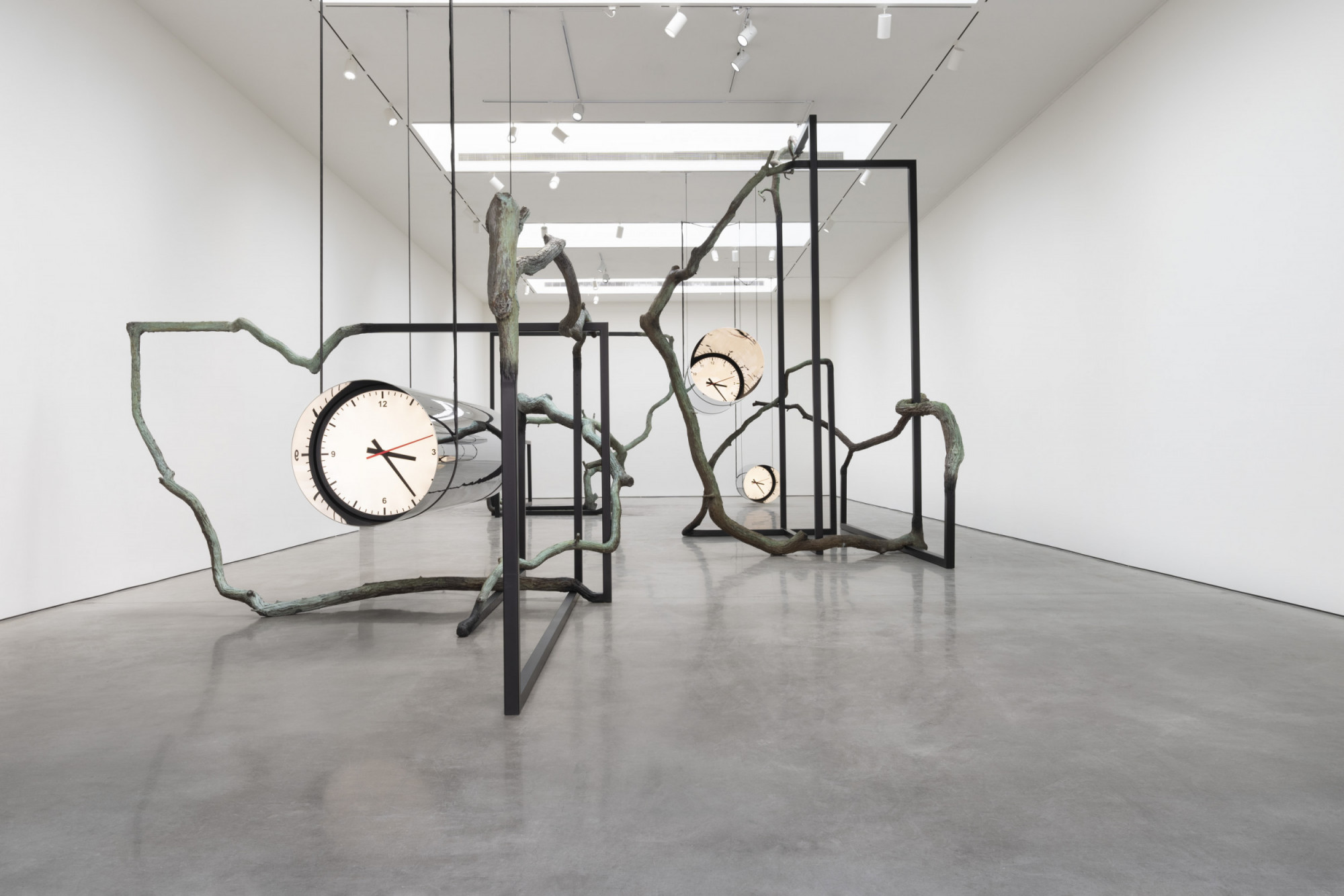
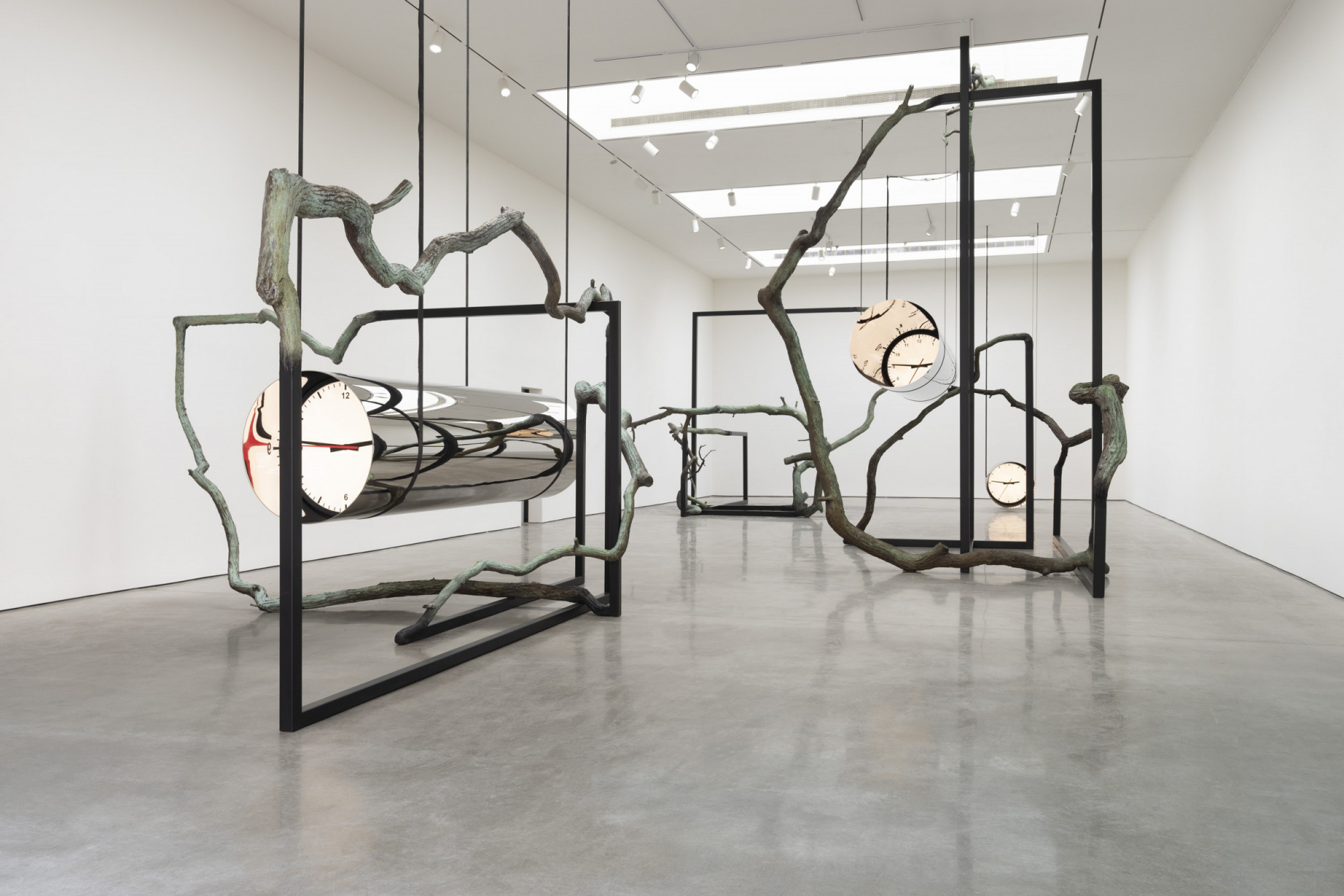
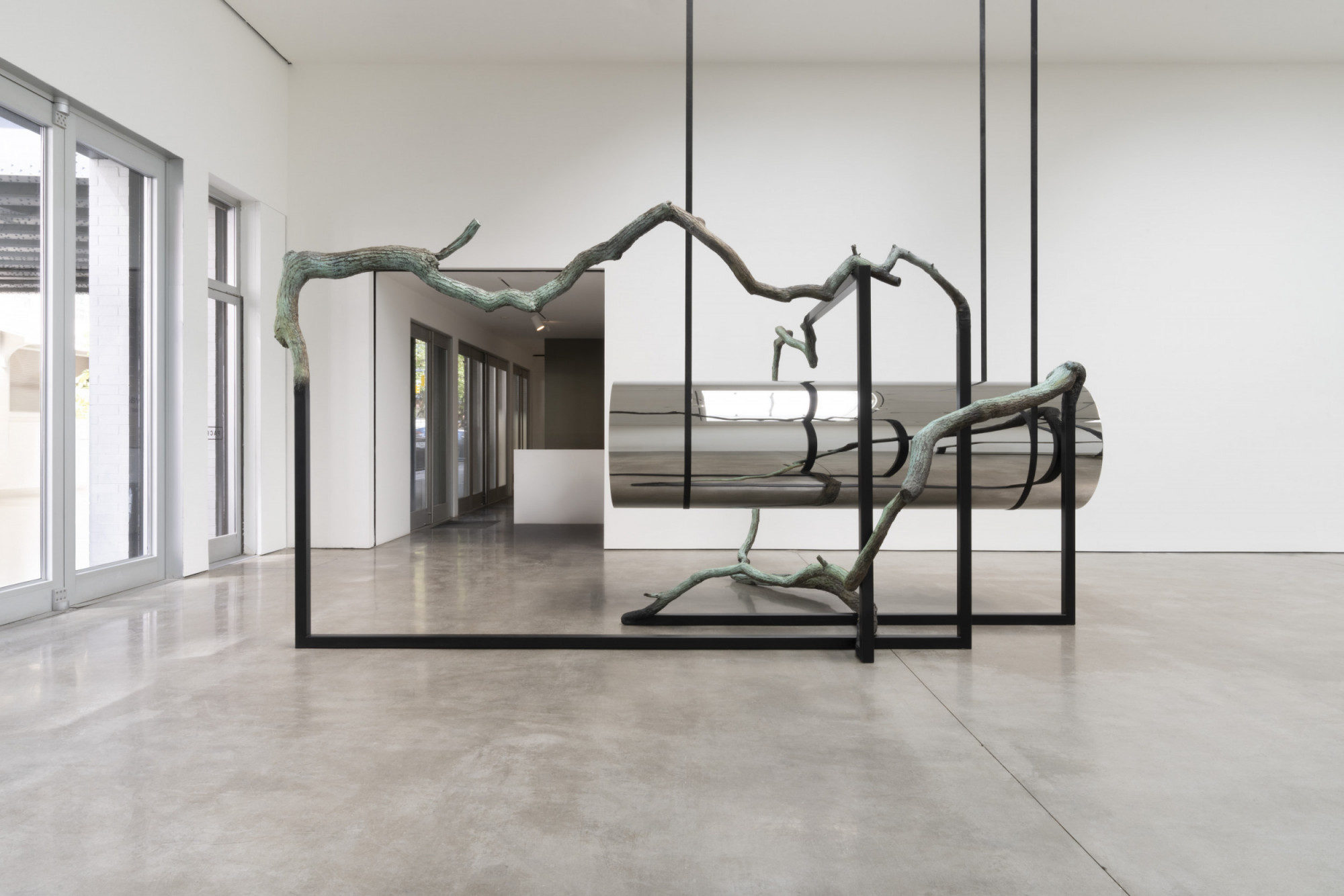
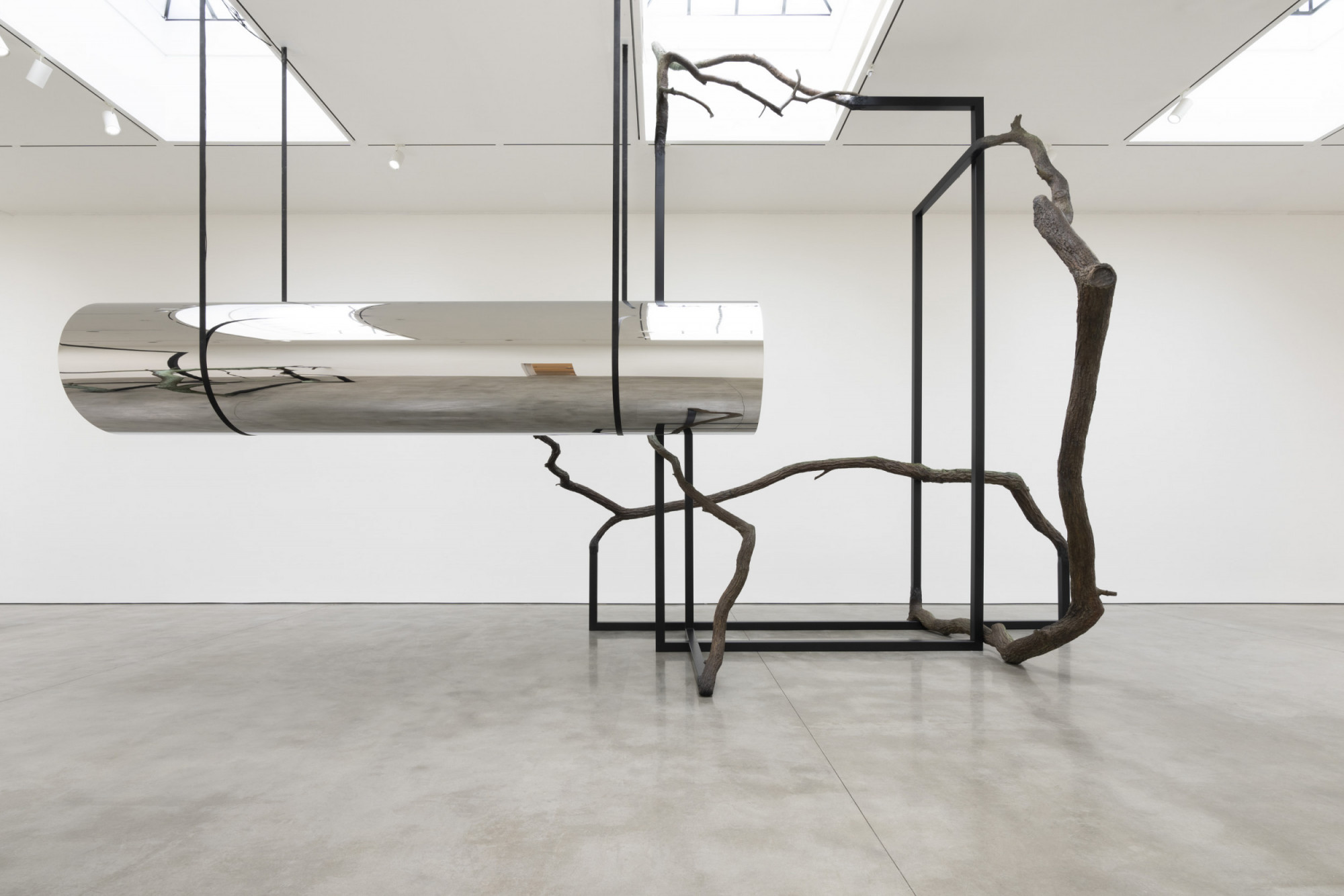
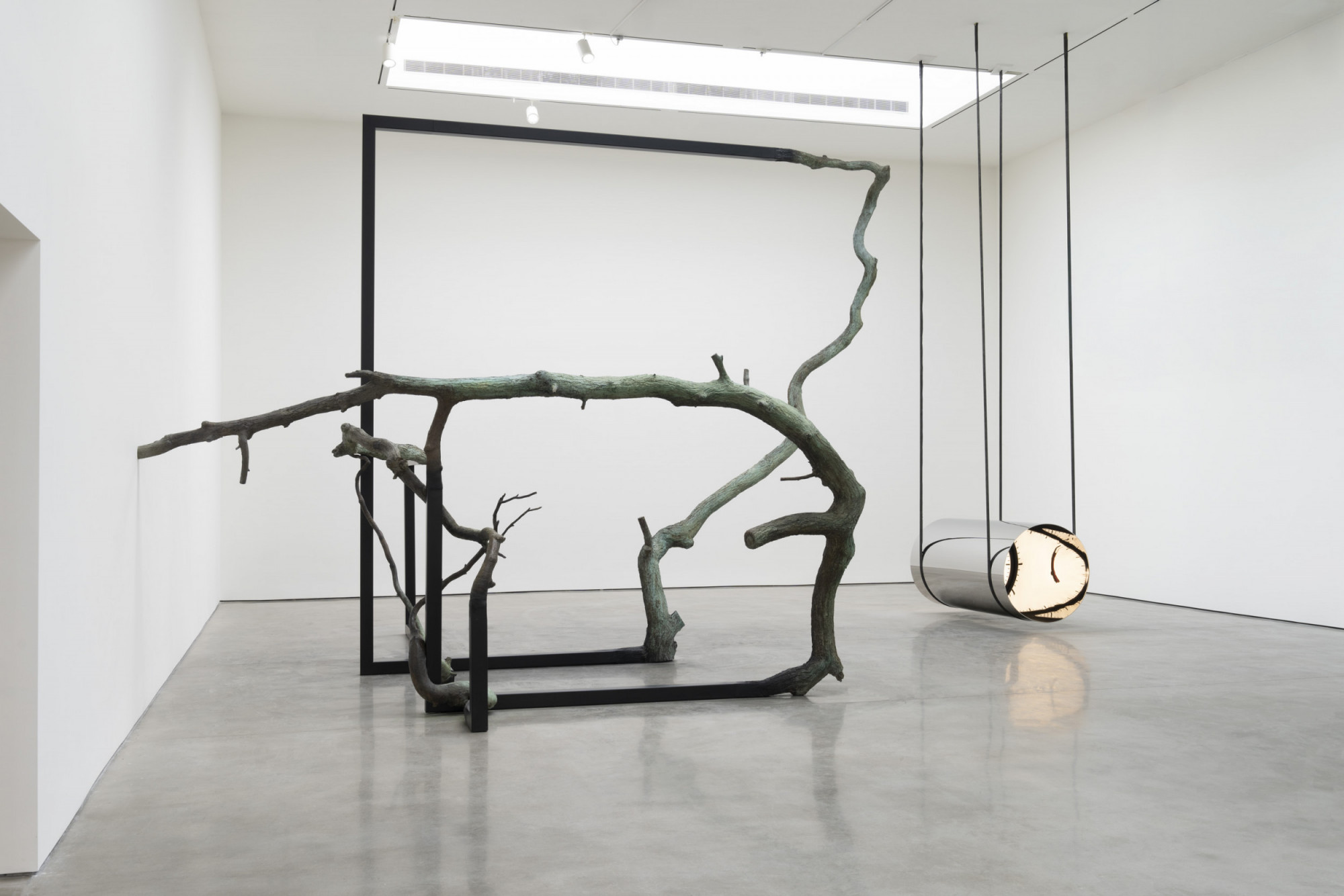
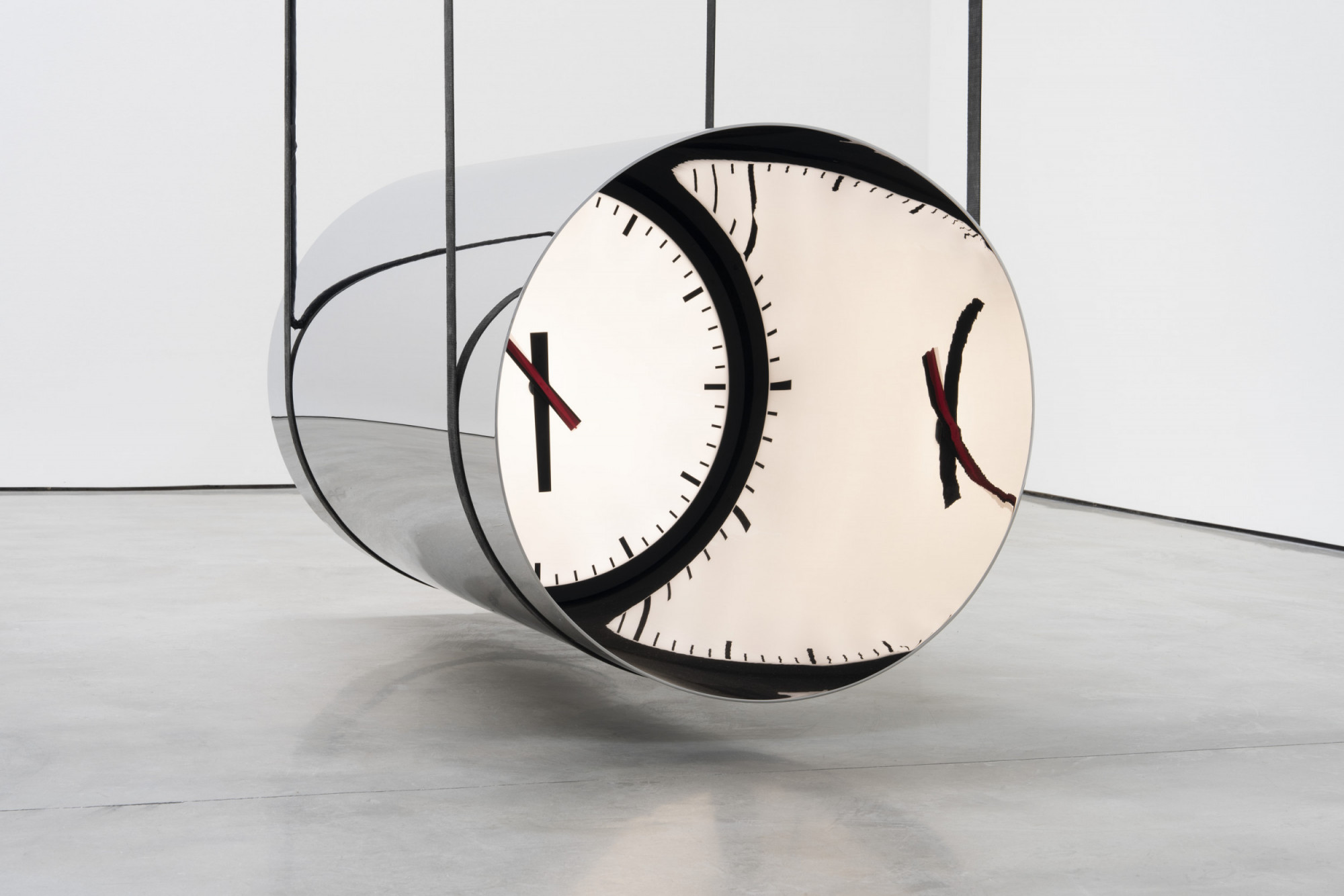
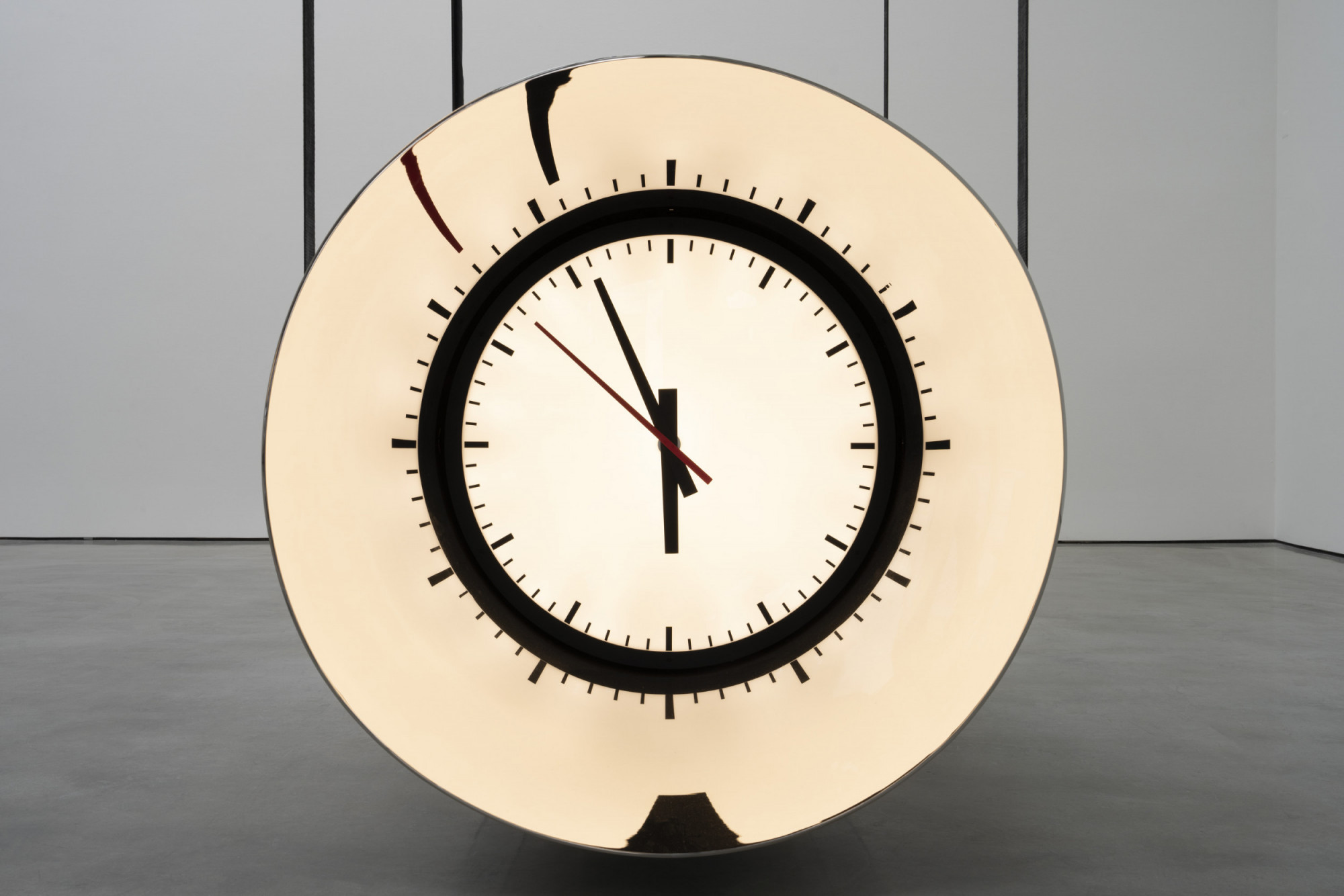
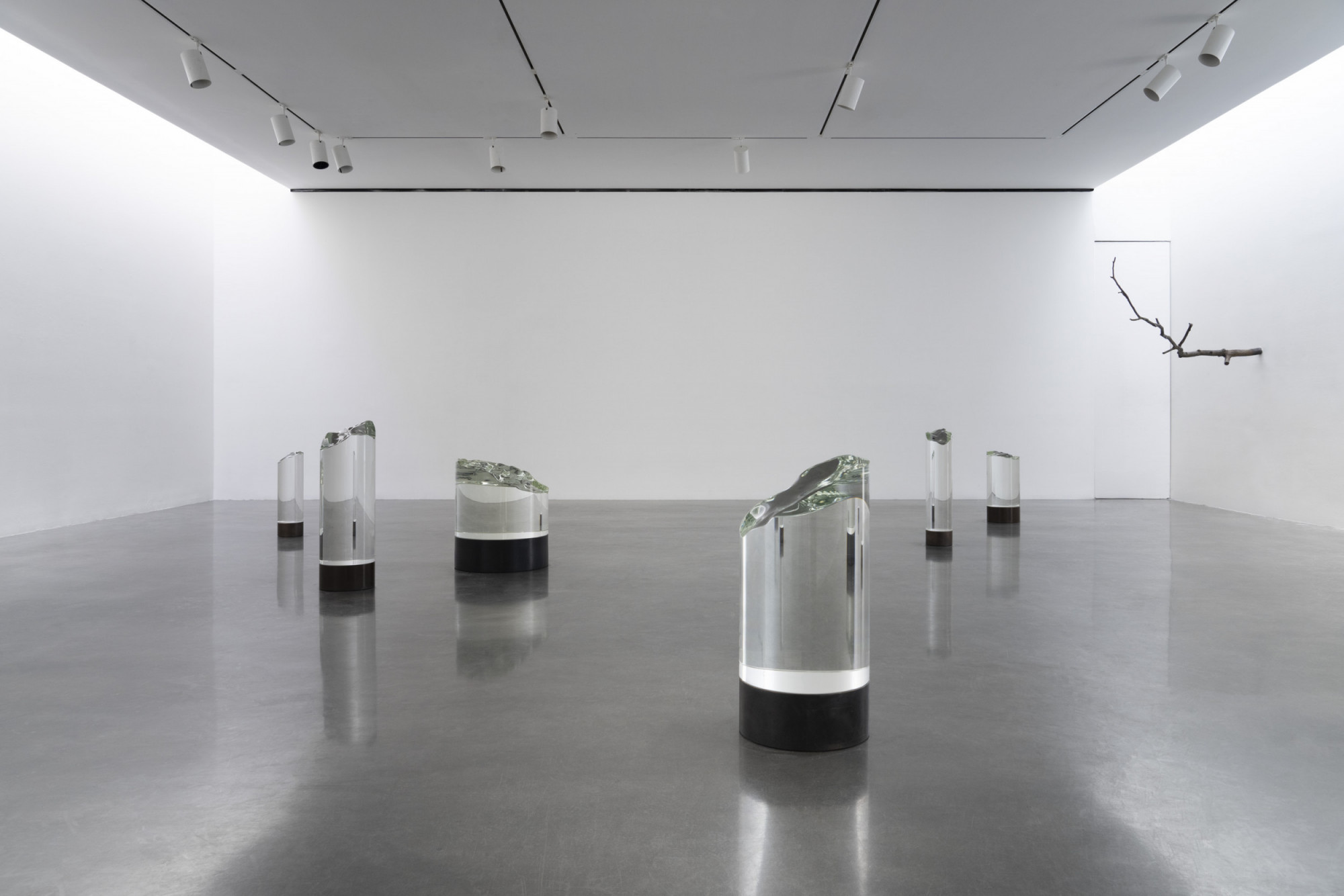
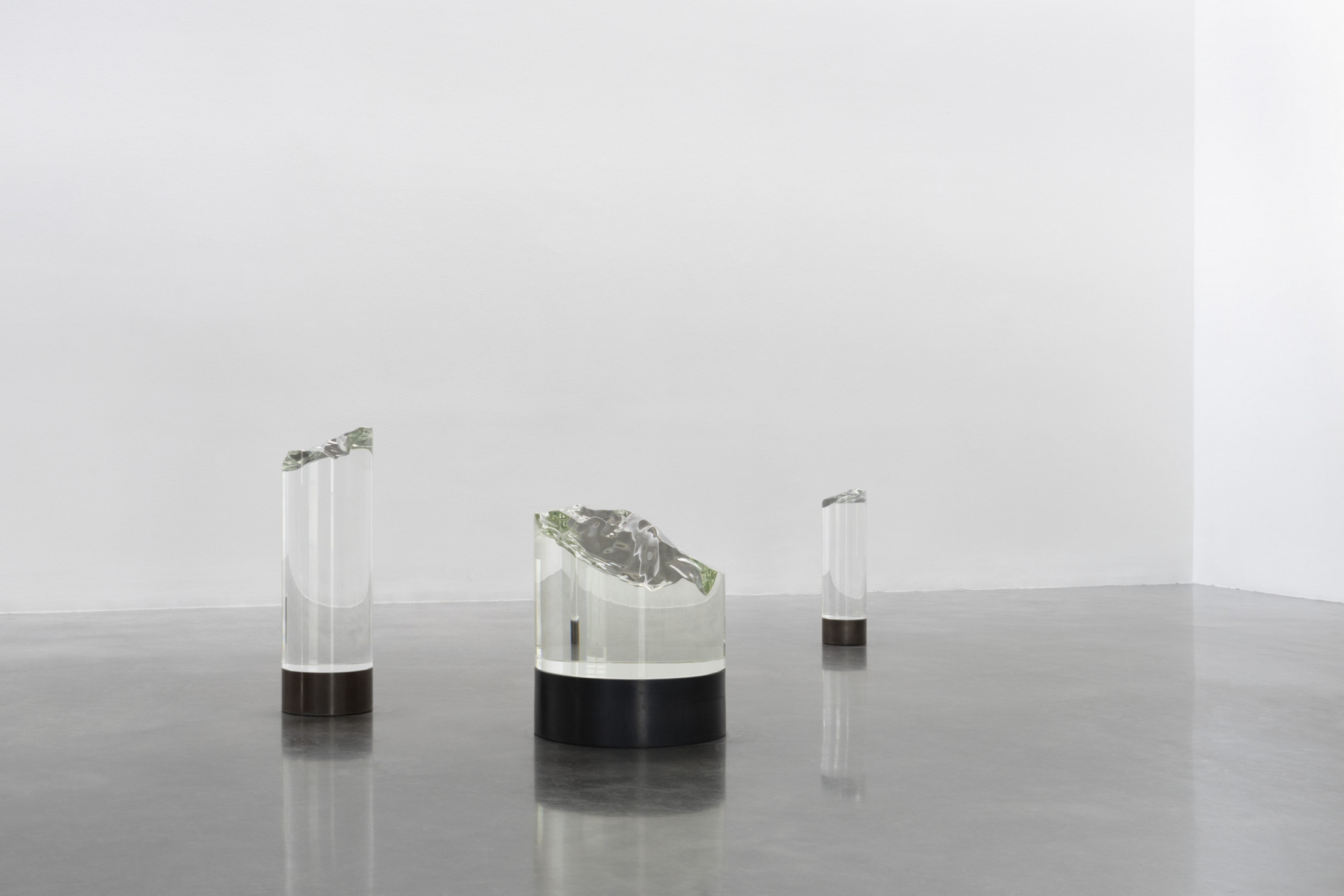
Alicja Kwade Telos Tales
In Telos Tales, Alicja Kwade composes an environment in which philosophical inquiry is crystallized as sculpture. Kwade’s new works extend her longstanding exploration of time, nature, and perception by orchestrating our embodied experience of materiality, reflection, and void. The environment she has constructed, in which architectonic structures seem locked in an arrested metamorphosis—transforming from open, rectilinear bronze forms into gnarled tree branches whose patinated surfaces suggest lichen—raises foundational and often deeply metaphysical questions. Her work engages the classic philosophical question of whether we complete nature or merely replicate it—investigating the porous border between what we create and what, in turn, creates us.
The crux of Kwade’s questioning revolves around both the concept and the everyday experience of time. Folding space and substance into an architecture of perceptual dislocation, Kwade draws on Immanuel Kant’s idea that time is not an external constant—not some “thing” out there in the world—but rather an inner framework, a subjective “inner clock.” Through a strange tension between fact and illusion, Kwade literalizes time’s interiority through the form of the tube. We move through time, yet we never truly experience it; we are always in a perpetual "now,” a kind of “inner tube” suspended in the inexorable unfolding of events.
Kwade has long used clocks as elements in her practice, harnessing the image of the clock for all its cultural references, but also utilizing its everyday function as sculptural material. In Telos Tales, this forest of metamorphosing steel structures is interwoven with discrete sculptures consisting of long, stainless-steel tubes embedded with working clocks. These works function like spatial riddles. They evoke inner organs or conduits, suggesting that time is not just something we move through, but something we are made of—and that we participate in making through the activity of thought and perception. “All the clocks display the same seemingly significant now-time, and they do so in a strikingly insistent way: their perfectly synchronized ticking is audible throughout the space, and all three show exactly the same quasi-now at once.” Yet the “now” that they represent is always already an illusion; by the time we register it, it has already slipped away.
As one moves through the gallery, the reflections of the clock on the concave inner surfaces of the tube—and the distorted images of the surrounding environment on its exterior—ripple and shift, registering our own bodily presence. Two kinds of movement intersect: the movement of the hand of the clock, and the shifting reflections of both exterior and interior space. “The reflection inside is about time as movement,” Kwade explains. Space is segmented into dual realms, inner and outer, mirrored and distorted, echoing the way our own embodiment divides objective reality from our own inner perceptions through the threshold of the senses. This dreamlike warping effect created through the play of reflection and metamorphosis suggests a surreal unbinding of the temporal fixities that would otherwise be associated with the authority of the clock.
Kwade’s engagement with the notion of telos harkens back to Aristotle, who understood it as a concept of intrinsic purpose—an endpoint already embedded in all beginnings. In Aristotle’s thought, telos is not simply an end; it is the seed, a hidden future nestled in the origin of everything. The titles of the patinated bronze sculptures, which are half-organic and half-industrial, are drawn from Aristotle’s own categories: Causa Materialis, Causa Efficiens, and Causa Formalis. These terms respectively refer to the raw matter to be shaped, the effect that brings about the end result of that shaping, and the shape of matter itself as form. This engagement with the ontology of matter undergirds Kwade’s efforts not to imitate nature but to complete it, to extend it, to give it “another turn.” In this way, her sculptures hover between architecture, engineering, and organic form—they are as much “grown” as they are forged. They are not defined by a category but exist in between, like strange creatures half-grown in logic, half-born from myth.
There is also a mystical and haunting quality to Kwade’s environment, which suggests another notion of time: the passing away of organic life and the memories it leaves in the form of residues and revenants. The tree branches that Kwade used to cast the bronze forms were collected from discarded matter on the streets of Berlin, traces of urban planning. Kwade gathered them while working together with local municipal gardening authorities who were responsible for their removal. “They are,” says Kwade, “the wild and dead ends of urban park, garden, and forest planning.” The resulting works are marked by the history of their former lives as trees. In the gallery space, they appear almost sentient—their branches twisting like sea monsters, suggesting the surreal hallucinations of a forest at night, the shapes the mind projects onto chaos. This “inner picture” we cast onto the external world is materialized through Kwade’s fusion and confusion of natural and artificial. Her forms are machines of memory and bodies of wonder. They suggest an inner monster of instinct and affect wrapped in a skeleton of mathematics and precision.
Memory itself becomes an active presence in Kwade’s work. What happens to the world, to objects, when we try to remember them? What happens to time when we try to pin it down? Kwade’s sculptures feel like memory’s scaffolding, the bones of things lost or yet to be. They carry a dystopian undertone—a quiet reckoning with what we are leaving behind, and an ominous attempt to reconstruct nature in our own distorted image.
Telos Tales is a meditation on the human condition: to be embodied in time and space, to navigate the tension between the affective and the metaphysical, the instinctual and the constructed. The works pulse with contradiction—unsettling and serene, logical and wild, fixed and fluid. In places, they seem to struggle, merge, or transform. The result is not resolution but resonance—a space where philosophy is sculpted into form and time itself is given shape.
- Oliver Shulz